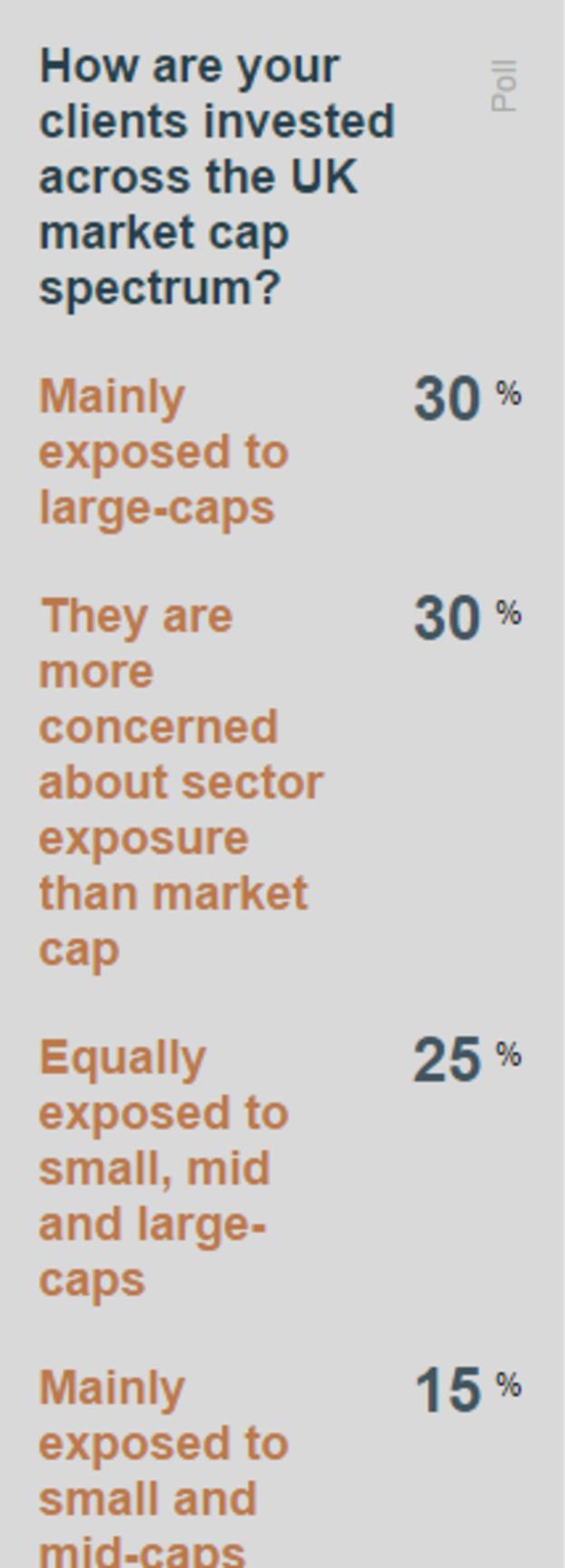

Advisers have said their clients are mainly exposed to large-cap stocks but are also equally more concerned about sector exposure than market cap exposure.
The latest poll for FTAdviser Advantage asked how their clients are invested across the UK market cap spectrum and revealed 30 per cent of advisers said their clients favour exposure to large-caps at the moment.
But another 30 per cent of respondents confirmed their clients believe sector exposure is more important than how they are invested across the market cap spectrum.
The results suggested clients are choosing to diversify as much as possible across market caps and sectors, against a backdrop of economic and geopolitical uncertainty.
Among those who took part in the poll, 25 per cent said their clients were equally exposed to small, mid and large-caps, while just 15 per cent said they were invested mainly in small and mid-cap companies.

A recent analyst note from Stifel Funds pointed out UK small and mid-cap investment trusts may provide an opportunity for contrarian investors following a significant discount widening in 2016.
The note said: “The [UK Smaller Companies] sector commenced the year on an 8 per cent discount and ended 2016 on a 14 per cent discount. This appeared to reflect a lack of investor enthusiasm for the area, at a time when UK large-cap companies in the FTSE 100 were racing ahead, with Forex gains especially helpful, while FTSE 250 companies have lagged behind.
“However, we think that when a sector has been out of favour for a while and discounts are wide it can often be a good opportunity for investors who are prepared to get on board ahead of any re-rating.”
Stifel noted the FTSE Small Cap index peaked at 4,931 in May 2015 and remains 6 per cent below that peak level.
There has been some speculation among analysts and investors that valuations in the UK equity market are at the more expensive end.
Adam Avigdori, manager of the BlackRock UK Income fund, suggested there are some sectors, particularly the more cyclical sectors, where valuations do look high due to corporate profitability being at all-time highs.
He said: “Spot valuations can make companies or sectors look expensive but we believe you must take a stock specific view and focus on companies whose technology, products or services give them high barriers to entry and pricing power which in turn allows them to generate strong cashflows to invest and pay dividends.
“Volatility in the market resulting from continued macro uncertainty will also lead to opportunities to buy quality companies at more attractive prices.”
Investors in large-caps may also need to be mindful of their currency exposure, as Simon Molica, portfolio manager at Morningstar Investment Management explained.
“As only 25 per cent of large-cap revenue is derived onshore, a rebound in sterling would hurt the FTSE 100 [index] far more than the FTSE 250 [index] which obtains 50 per cent of its revenue domestically. Of course, the same applies in reverse,” he said.
Mr Molica added: “There are sector sensitivity and concentration issues that must be understood by investors. As one such example, the top 10 holdings in the FTSE 100 account for 43 per cent of the exposure versus just 11 per cent for the FTSE 250. Therefore, mid-caps provide greater diversification benefits at a stock selection level.”
eleanor.duncan@ft.com



